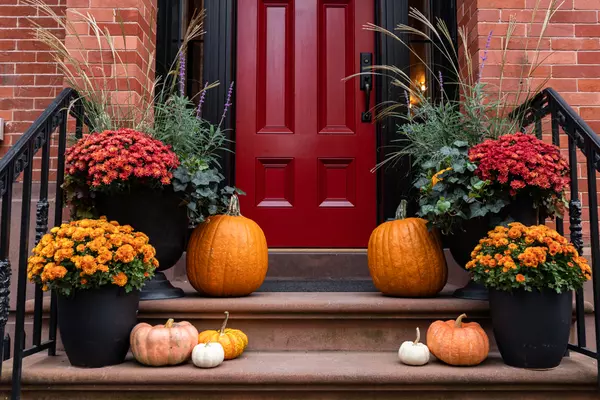6 Ways to Create a Beautiful Spring Garden

What could be more welcome than the first warm breezes of spring?
They refresh both the gardener and the garden. There’s no better way to enjoy this change in the weather than to plan your borders so they peak during this beautiful time of year.
Spring starts anywhere from February to April, depending on where you live and what the temperatures happen to be any given year. Your flowers will hang on longer, in some cases for a couple of months, during a cool spring. Or the season can rush by in just a few weeks during a warmer year.
Early, mid and late spring garden
Short or long, spring usually has three phases: Early, mid and late. Make sure you have plants that look good in each one. Early spring is chilly with erratic weather patterns. Look for tough early bloomers, such as hellebores, witchhazel and snowdrops. In mid- to late spring you’ll notice common lilacs, peonies and many others blooming abundantly.
So as you can see, a great spring garden is more than a few tulips and daffodils plunked in the ground. These essential design ideas will take your spring garden from ho-hum to positively perfect.
1. Think fragrance
Spring and fragrant flowers just seem to go hand in hand. Common lilac, peony, hyacinth — their heavenly scent makes time spent outside a real pleasure. Place them near a well-travelled path or under an open window so you won’t miss out. Work fragrant plants into a foundation planting or near the front door to share a favorite scent with visitors. Sheltered from the wind by the house, the fragrance won’t dissipate as quickly as it would in an open area. A hedge or privacy fence can serve the same purpose in your backyard. If you don’t have room for a large woody vine, try one of the other aromatic spring beauties in the list below.
Fragrant spring flowers
Make sure a few of these spring bloomers are close to areas you visit frequently so you can enjoy what they have to offer.
-
Common lilac Syringa vulgaris
-
Dianthus Dianthus spp. and hybrids
-
Hyacinth Hyacinthus orientalis
-
Lily-of-the-valley Convallaria majalis
-
Mockorange Philadelphus spp. and hybrids
-
Peony Paeonia lactiflora
-
Star magnolia Magnolia stellata
-
Stock Matthiola incana
2. Choose a pretty spring color palette
Pastel colors, such as the pink, lavender and white above, create a classic spring look. These soft colors are easy to mix and match. Frame an entry with them to give your front door a laid-back and relaxed style. Swap those pink tulips for bright orange ones and you’d change the mood from serene to peppy.
3. Balance scale and size of plants in the spring garden
Doesn’t a photo of a lush green lawn path beckon you to wander in and see what other views might be around the corner? Grow a few large spring-blooming shrubs in areas far from the house. Big sweeps of vibrant color from these rhododendrons are perfect for attracting attention to vistas. The brighter the better, if you want a lot of impact from the view out of your back window. Save sweet little combos like the one at right for an often-used path or an area next to your favorite seating spot. Smaller plants, such as the yellow archangel, are more in scale with these situations and often have smaller blooms or more subtle flower colors that are harder to see from a distance.
Foliage plays a role in the spring garden, too
Not every good-looking plant in spring has flowers. Emerging plants can be a part of the show, too. Look for the graceful curl of hostas unfurling as they poke through the soil and upright ferns uncoiling their fiddleheads. And check your epimedium every day to see its changes in leaf color.
4. Adding bulbs to your spring garden is a no-brainer
When you think spring, it’s only natural to start with a few bulbs. Tulips, daffodils, grape hyacinths and many other spring-blooming bulbs are so easy to grow. Take the petite greigii tulips — they perk up this foliage-filled border with minimal care. They’ll even naturalize, or spread on their own, if you keep the soil on the dry side through summer. How would you like even more bulbs that will expand into a big pool of color in your garden? Check out the list of bulbs below for a few that can naturalize in your garden.
Bulbs that will spread in your spring garden
Start with just a few of these bulbs, and give them a sunny spot with good drainage. It won’t take long for you to have a big patch of color that brightens your spring garden.
-
Camassia Camassia quamash
-
Crocus Crocus spp. and hybrids
-
Daffodil Narcissus spp. and hybrids
-
Grape hyacinth Muscari armeniacum
-
Grecian windflower Anemone blanda
5. Add trees and shrubs for structure in your spring garden
Not all spring-flowering shrubs are as flashy as rhododendrons. But trees and shrubs provide the overall structure essential for a good-looking garden design. Plus spring-blooming annuals, perennials and bulbs are perfect under a deciduous tree. The smaller plants will soak up the sun and bloom like crazy before getting shaded out by the leaves above. Once the canopy fills in, it protects the foliage below from getting too crispy.
Flowering crabapples and ornamental pears are stunning in bloom but trees don’t have to flower to be impressive. Many have attractive features that are well worth bragging about. Take river birch, for example. Its shaggy bark adds a unique texture that complements the spring flowers nicely. When the blooms below fade, the tree continues its performance year-round.
Shrubs are great additions to a spring garden
Shrubs are a great choice if you don’t have a lot of room in your yard but still want the height and structure a tree provides. Why not try the pearlbush? This low-maintenance specimen is also drought-tolerant, once established. Its small white flowers aren’t fragrant, but they usually last a couple of weeks in spring. To protect the buds from a late frost, give pearlbush a sheltered spot next to a wall, or on the east side of the house.
6. Don’t forget spring planters!
Whether it’s early, mid- or late spring, you can dress up entries, patios and decks with containers. Tulips and wishbone flowers are surrounded by bacopa and creeping Jenny, which seem to flow out of the planter. The wishbone flower will eventually get leggy, so go ahead and cut it back by a third and it will bloom again in fall. When the tulip flowers are past, pull the bulbs and replace them with a summer-blooming favorite.
Garden center shortcut
Instead of having to chill or overwinter your own bulbs, make it easy on yourself and buy some already in bloom at the garden center. Look for open flowers to help you decide on the color and then pick up plants that are labeled and in tight bud for a longer-lasting show.
Read more at GardenGateMagazine.com
Categories
Recent Posts











"My job is to make sure buyers and sellers have an exceptional experience by surrounding them with a skilled, service-driven agent and a supportive environment that puts their goals first. "
